
The Ultimate Guide To
GRE Time Management for Quant
GRE Quant Time Management Tips – In our world, Time has often been equated to Money. In the GRE world, however, TIME SAVED = A HIGHER SCORE!
Quick question: How long are you supposed to spend on a GRE Quantitative question?
Answer: Less than a minute.
You might be thinking if something like that is even possible. We’re here to tell you: Absolutely YES.
- How do you go about managing time in a complex section such as the GRE Quant Section?
- Are there any GRE Quant tips and tricks?
- How can you score high in GRE Quant?
- Is the GRE Quant Section getting tougher?
Dive into our guide for answers to all these questions and more. Let’s begin!
Table of Contents
-
#1 Is GRE Quant Getting Harder?
-
#2 Time management tips before the GRE
-
#3 Time management tips on the GRE day
-
#4 GRE Math Quantitative Comparison Questions
-
#5 Approximation Techniques in GRE Math
-
#6 Elimination Techniques in GRE Math
-
#7 Use of Standard Techniques
-
#8 On Screen Calculator
-
#9 Question-wise Split Up
Chapter 1
Is GRE Quant Getting Harder?
Is the GRE Quant (Quantitative Section) Hard? Is it getting harder? These are a few of the questions that many GRE aspirants frequently ask when deciding to take the test and while prepping for the test. Galvanize GRE Test Prep package has been designed by stellar faculty and instructors with prestigious educational tutelage themselves. We will help you face the GRE quant questions with varying levels of difficulty, come what may.
Difficulty Level:
Obviously, the GRE math level is going to be harder than say the SAT/ACT math. The GRE quant sections cover high school numerical concepts – algebra, arithmetic, geometry, data analysis, and statistics.
Students will approximately get around 1 minute and 45 seconds to complete each question. This timing is the hard part that test takers must get accustomed to. Only practice tests (link to our practice tests)
GRE is first and foremost a section-level adaptive test. So based on how well you have done in the first quant section or how tough you found the initial quant part, the following section will vary accordingly.
GRE is a timed examination that has adaptive difficulty levels. Hence, the GRE is meant to test the student’s fortitude, and skill apart from just their knowledge.
|
Number |
Mean Score |
Standard Deviation |
|
1,643,587 |
153.39 |
9.35 |
Quant Score Probabilities:
|
Score |
Probability |
|
170 |
1 out of 25 students |
|
166 |
1 out of 10 students |
|
160 |
1 out of 4 students |
|
153 |
1 out of 2 students |
|
147 |
3 out of 4 students |
Structure:
Test takers will face 2 quantitative sections of 35 minutes each. Each section will carry 20 questions. Students must be aware, there may be an experimental/research section (unscored) that may appear in either a quant section or as a verbal part. Students will approximately get around 1 minute and 45 seconds to complete each question. This timing is the hard part that test takers must get accustomed to. Only practice tests can aid the students in dealing with time management of the GRE quant section. Practice will bring about familiarity with the test pattern too.
Adaptive Test:
Test-takers must know GRE is first and foremost a section-level adaptive test. So based on how well you have done in the first quant section or how tough you found the initial quant part, the following section will vary accordingly. But students must not waste time in the actual test trying to compare the 2 sections to see how they’ve fared. There will be no time for that. Students will do better focusing on the test at hand rather than worrying about the adaptive nature of the test.
Gaining Confidence:
The GRE math section will seem most formidable to test-takers who have been away from regular school-level computational math for some time. Also, some humanities, pure science majors with minimal level math at college might also be averse to the GRE math section. Even regular quantitative majors might be put off by the timed nature of the test. Let’s face it, GRE is a timed examination that has adaptive difficulty levels. Hence, the GRE is meant to test the student’s fortitude, and skill apart from just their knowledge. Students must remember to keep any pessimistic/defeatist mindset at bay. Get ready to put in the man-hours required to bring up your scores. Practicing sample GRE tests is the best way to ace this standardized exam.
Chapter 2
Time management tips before the GRE
When it came to exams, even Albert Einstein got the jitters. A lot of successful candidates tend to be very particular about time. Time management is a vital skill that one should develop whether a home-maker, a parent, a student, or a working professional. All you should be bothered about is how to manage your GRE exam time.
Note – There are twenty-four hours in a day but a part of that should be allotted to sleep. Contrary to popular belief, all-nighters are extremely bad for tests. There is no glory in sleep deprivation. Your brain cells need enough rest for rejuvenation so that you can prepare at your best.
In this section, we want to share with you GRE tips to manage time during your preparation and on the day of the exam when actually tackling quant questions.
GRE quantitative score is calculated on a scale of 130–170, in one-point increments. In this blog post, we want to share with you GRE tips to manage time during your preparation and on the day of the exam when actually tackling quant questions.
Now, before you start with your preparation, fix a tentative date on which to take the exam and have a target score in mind.
That score should be based on which universities you’re planning to apply to, and what discipline you’re planning to pursue whether it’s an MS or a Ph.D.
For example Computer Science – if you want to go ahead with an MS in Computer Science, 170 is required by most universities. To get into an Ivy League or a good university, it’d help greatly if you had a high GRE Quantitative score.
Of course, there are courses that don’t expect so high a score in the GRE Math but at Galvanize we work very hard to make sure that every student reaches that perfect score. So, what is the first step in this journey toward your target score?
It’s having a comprehensive study plan. What do we mean by a study plan?
It’s a chart that you’re going to make. Whether on a daily or an hourly basis, you should plan to squeeze in an appropriate amount of time for your GRE Quantitative Reasoning practice amidst other commitments.
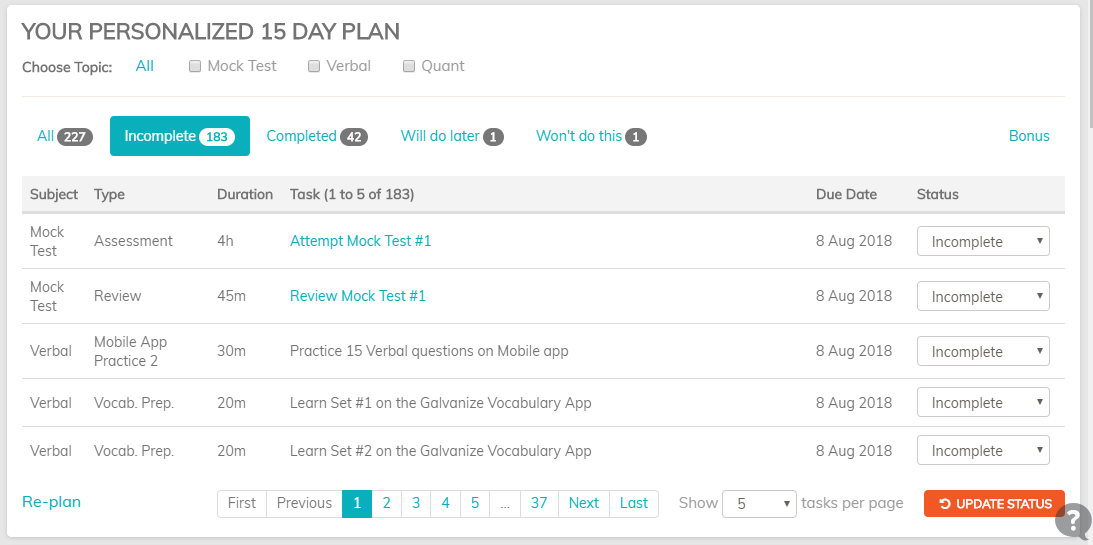
If you’re a working professional, you might have to find some time within your work hours or after your work hours to prepare for the GRE.
You also need to keep the target date in mind – so how much time you should allot depends on the target day and how much you need to cover.
At Galvanize, we give every student a comprehensive study plan based on their diagnostic test score & their target date keeping in mind other personal commitments. We make sure that our study plan is comprehensive, exhaustive, and convenient allowing you to attain your target score easily.
All that’s needed is for you to follow it consistently. Even if you do forget or start to slack off, we do have dedicated course managers who like your parents will now and again check in, remind you of your pending task and monitor your progress in tackling GRE Quant questions.
You are special to us
We have Personalized - Study Plan, Course Managers, Feedback & more!
Take me there!You only have to follow the instructions of your course managers and the study plan – that’s all you need to do if you enroll at Galvanize.
Number of questions in the GRE Quantitative Reasoning section:
The GRE Quant Section has 40 questions in total which are divided into 2 sections each containing 20 questions and the time for each section will be 35 minutes. In total, the GRE Quantitative sections take 1 hour and 10 minutes.
This section includes four main topics.
- Arithmetic
- Algebra
- Geometry
- Data Analysis
Arithmetic :
To tackle this section you need to have a better understanding of the number family and operations performed on them.
Algebra :
Since basic algebra focuses on simplification and manipulation of equations, you need to practice the same by taking up simple problems followed by more difficult ones.
Geometry :
Geometry is best learned iteratively. So, you need to cover each theory and practice accordingly in order to imbibe the formulae and concepts intuitively.
Data Analysis:
You will need to be adept at the art of extracting all the information you can from the data given. Practice a lot and take the quantitative tests to score well.
Breaking Down the GRE Quant Syllabus:
ETS tests the following skills with the quant section.
- Ability to reason quantitatively and also to model and solve problems with quantitative procedures
- Understanding elementary mathematical concepts and skills.
So let’s see the overview of Quantitative Reasoning.
Arithmetic:
- Properties and types of numbers
- Ratios and Proportions
- Percentages
- Arithmetic Operations
- Exponents and roots
- Factorization
To tackle this section you need to have a better understanding of the number family and operations performed on them.
Algebra:
- Solving Linear Equations
- Quadratic Equations
- Operations with Algebraic Expressions
- Inequalities
- Coordinate Geometry
- Solving Expressions
- Relations
- Graphs of Functions
Since basic algebra focuses on simplifying and manipulating equations, you need to practice by taking up simple problems followed by difficult ones.
Geometry:
- Polygons
- Circles
- Three-dimensional figures
- Area, Perimeter, Volume
- Angles
Memorize basic Geometric formulas for easy calculation and saving time.
Data Analysis:
- Probability
- Data interpretation with tables and graphs
- Random variables and Distributions
- Permutations
- Mean, Mode, Median, Range
- Standard Deviation
This section needs more attention as it may have more data to be considered while solving the problems. Practice a lot and take the quantitative tests to score well.
Prioritizing Topics in GRE Quantitative Reasoning
Now, a lot of students ask which topics should be prioritized in the GRE quant syllabus.
Knowing which topics to prioritize is crucial for an exam like the GRE. It will ensure you channel whatever time you have available towards having the most effective GRE Quant practice sessions.
First things first, thus far, Geometry has been found to carry less weight. There are usually only two or three questions – these questions tend to be quite tricky.
Most weight is carried by Arithmetic and Data analysis.
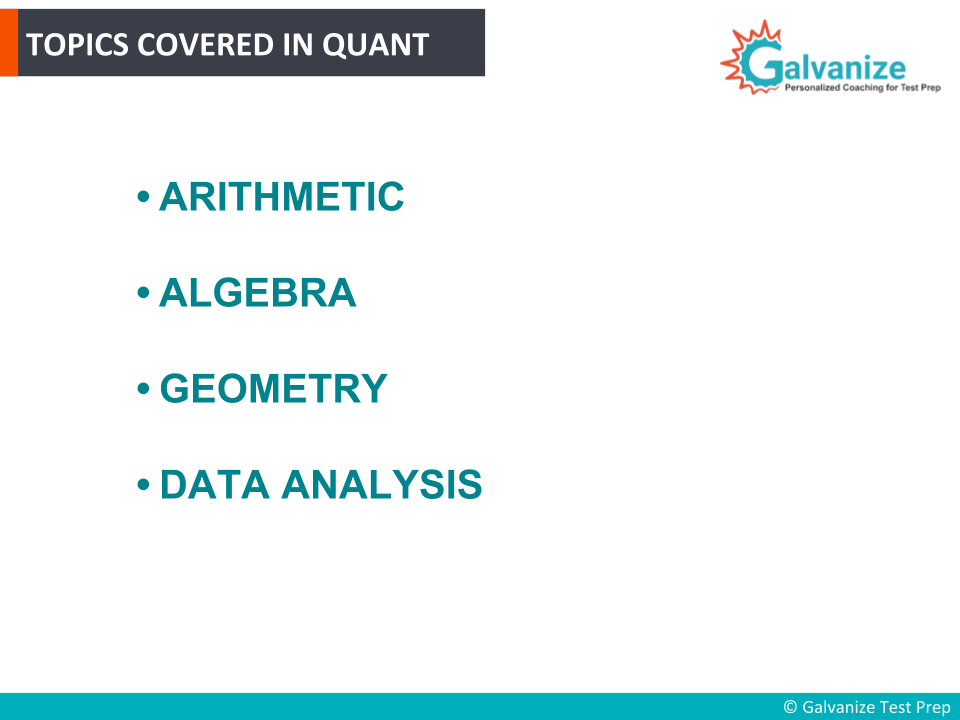
Data analysis carries the maximum weight. You have probability, permutations, combinations, data interpretation then arithmetic. Algebra is intertwined with arithmetic. So these three topics carry more weight than Geometry.
So when you prioritize, you prioritize those topics you’re least comfortable with – for example, that’s probably Data Analysis.
GRE is a skill-based exam rather than a knowledge-based exam and this means concept clarity is a must. The questions you encounter will be very easy provided you’re very clear with the concept.
If you’re going to prepare on your own, schedule a study plan, make sure you start with Data Analysis and Arithmetic and then you move on to Geometry in the end.
You ought to make time to test yourself extensively across each of the topics. Allot time for your tests.
Now, some of you might wonder ‘but is the GRE Math hard’?
While it is true that compared to other standardized tests such as the SAT and the ACT, the GRE is considered more difficult, that’s no reason to panic just yet.
The math tested on the GRE is actually of a lower level than the math tested on the ACT & SAT. The only reason the GRE might create more panic is that the word problems consist of the most trickier vocabulary or the mathematics problems might require higher-level reasoning.
It helps to remember that the GRE tests you on the most fundamental topics. No higher level math, no trigonometry, no calculus none of the topics that normally create panic.
Simple fractions, simple decimals, simple number theories, prime numbers, even numbers – these are the GRE Quant questions you’re likely to encounter. The main skill you need to pick up is time management. The GRE is a timed test, after all.
It’s not enough that you allot time to brush up on topics, you should also practice what you’ve learned. You should also be able to apply whatever you have learned and that is where tests come into play.
You need to understand the pattern of the test the GRE. So we at Galvanize have a pedagogy here.
After every chapter we have practice tests, untimed tests, and timed tests, there are section tests across sections and several mock tests to emulate the current GRE and all of our students have benefited from all these tests to the extent that their actual GRE score is almost always equivalent to our final mock test, the last mock test.
So, if you enroll at Galvanize that’s a huge advantage for you.

You know that if you get a Quantitative score of 165 in the last mock test on our platform, then you’re bound to get a plus or minus 2 on the actual GRE. Almost an actual 165 is guaranteed in your GRE. That’s how our mock tests have been devised.
As Confucius said, “I hear I forget, I do I remember, I work hard and I practice, I understand”. So you need to practice hard to make sure you comprehend the topics in mathematics and then understand the applications of these concepts.
Simply taking tests is not enough, you should make time to review your mistakes. At Galvanize, after every test, we allocated time to review students’ performances. This is very important. There is no point in moving ahead with tests blindly without reviewing each of the tests.
Last Minute Tips for GRE Quant
Prepare a math cheat sheet to go through. Cheat-sheet here refers to a sheet of GRE formulas. This will come in very handy during your GRE Quant practice. As you know there are applications for quant formulas like surface area and volumes.
Most questions require taking a rational approach. It will be easier if you memorize the formulas. Maintain a handbook of GRE formulas. At Galvanize, we give students a PDF with all the important GRE Math formulas, rules, tips, and tricks & strategies once you kick-start your study plan.
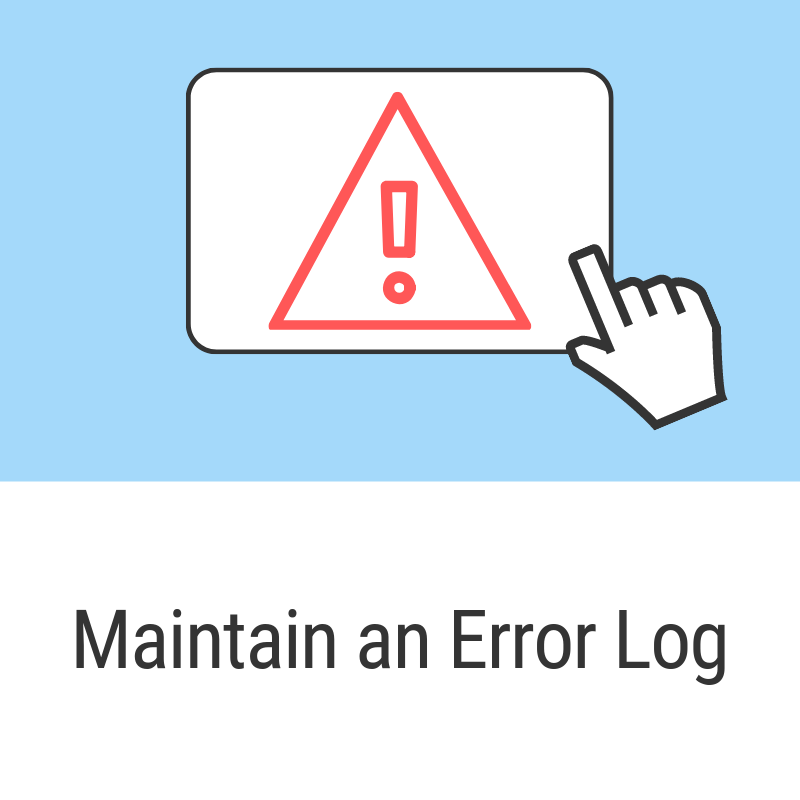
Maintain an error log
Maintain a log of your mistakes. It’s not wrong to make mistakes, what’s wrong is making the same mistakes again and again.
So, what you must do is learn where you are going wrong, identify the errors you are prone to, crack down on knowledge gaps and learn. The learning curve may be steep for some of us, but it will be worth it in the end. : )
Taking the time to review your GRE Math performance at the end of every test will result in greater confidence.
At Galvanize, after every mock test, we give our students personalized feedback logging a list of mistakes that they have made. We do this to help you understand where you’ve gone wrong.
Now, that is where SWOT Analysis comes into the picture. We analyze your pain points, strengths, and weaknesses and give you topics you need to work on to improve your GRE score.
GRE is a section adaptive test. Based on your performance in the first section, the difficulty level of the second GRE Quantitative Reasoning section will either increase or decrease. ETS intends to be more user-friendly and adaptive in this way.
Chapter 3
Time management tips on the GRE day
What should you do on the test day? You’ve prepped well, followed the study plan, and reached this point. Here are a few Time Management Tips for the day of the GRE.
Galvanize’s Top 10 Math Tips for a better score on the GRE:
- First thing, you will be given a few scratch papers. Do maintain the scratch paper neatly. Do the rough work neatly. It’ll be easier for you to analyze your work once you do your rough work neatly.
- Follow the mnemonics. MIGMO. MIGMO stands for Make an Intelligent Guess and Move On. GRE is a timed test with no negative marking. So, it’s not advisable to skip any question on the GRE. Skipping questions do not add any value to your score! Take a guess, it might go right and that will add value to your score!
- Use the on-screen calculator only when necessary. As we progress, we’ll explain what an on-screen calculator is and what it looks like.
- Go for approximations and estimations. This is very important, especially for a timed test like the GRE. Use estimations & shortcut techniques rather than long approaches to solving problems.
- Go for standard percentages. For Galvanize students, we have an exclusive module for Tips and Tricks to score a 170 in Quant. We have exclusive webinar videos on each topic and how you could solve them using tried-and-tested hacks. Oh, we nearly forgot to mention, all our webinar videos are also on YouTube for you to access!
- Follow a rational approach to solving QC-type questions. You should not take more than 1.5 mins to solve these GRE Math questions.
- Back substitute for MCQs and MCQs. Go for the answer elimination method, do not use the analytical approach.
- Follow the mnemonics ZONEF and PIES. ZONEF is when you want to plug-in values. For example, if X is a positive number, then it can be a fraction or an integer. So ZONEF – Zero Once Negatives Extremes and Fractions comes into play here. More on this later in the blog. PIES is for word problems. Parts Information Equation Solving.
- Go for visual interpretation when dealing with Geometry question types. Go for textual information when dealing with word problems.

Chapter 4
GRE Math Quantitative Comparison Questions
GRE Math Practice Question
You have two quantities – Quantity A and Quantity B. This is a multiple-choice question with the 4 options fixed. A will be Quantity A being greater, B will be Quantity B being greater, the third option will be both Quantity A and B being equal and the fourth option will always be relationship cannot be determined.
Go for the fourth option only after you analyze the GRE Math question in detail, reviewing the rest of the options and confirming that they do not fit. There is an exclusive webinar video on how to solve quantitative comparison question types under one roof – YouTube. Let’s understand the trap in this question.
What do students do? Let’s take a look at the question below.
They realize 49 is less than 50, so they say Quantity B is greater. The trap here is LESS than and LESS than or EQUAL to Quantity A and B.
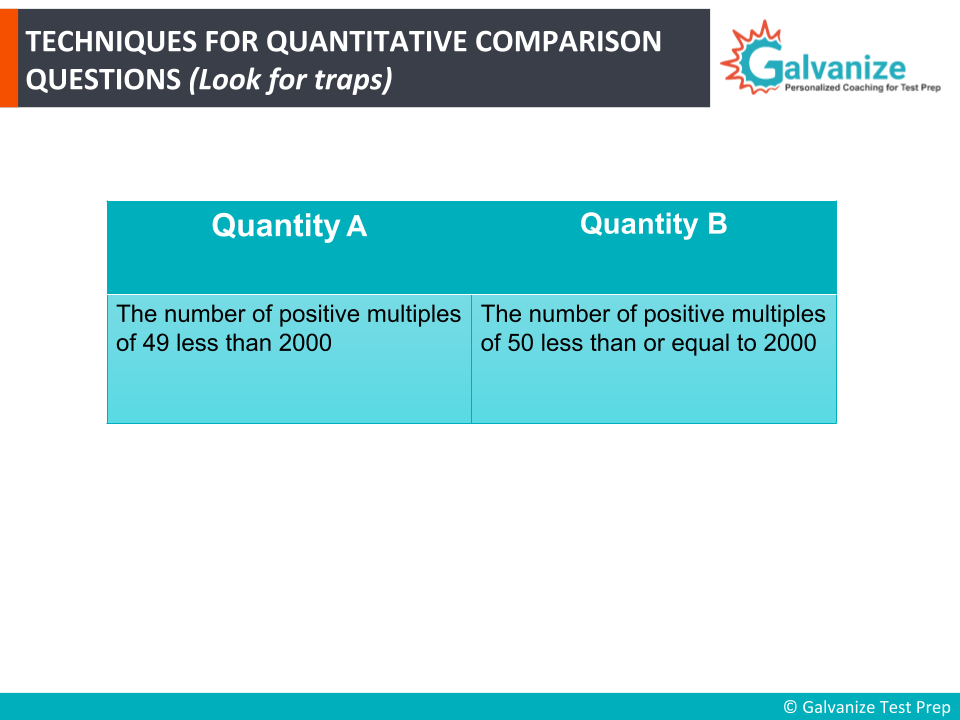
Explanation:
49*40= 1960
49*41= 2009 > 2000
So, you know Quantity A should be 40.
50*40= 2000
Now, you see the answer is C, and both the Quantities are equal.
Watch the video to understand the example further!
Chapter 5
Approximation Techniques in GRE Math
GRE Math Practice Question
To solve the question below, we’re going to do a little manipulation here. You know that the cube root of 8 is nothing but 2. 8 ^ ⅓ is 2. But you also know that when the powers are the same you need to compare only the bases – 9^1/3 is greater than 8^⅓. Therefore, 9^⅓ is greater than 2.
Let’s rewrite this- ‘x’ is actually ‘3-minus’ a number greater than 2, right? so you’re reducing by 3 here – a positive number. At the first step itself you know they’re subtracting ‘3’, so you know that the answer can’t be greater than 3. So option ‘E’ is ruled out.
Again, we can see that “3 minus number>2” means that this value cannot lie between 1-2 or 2-3.
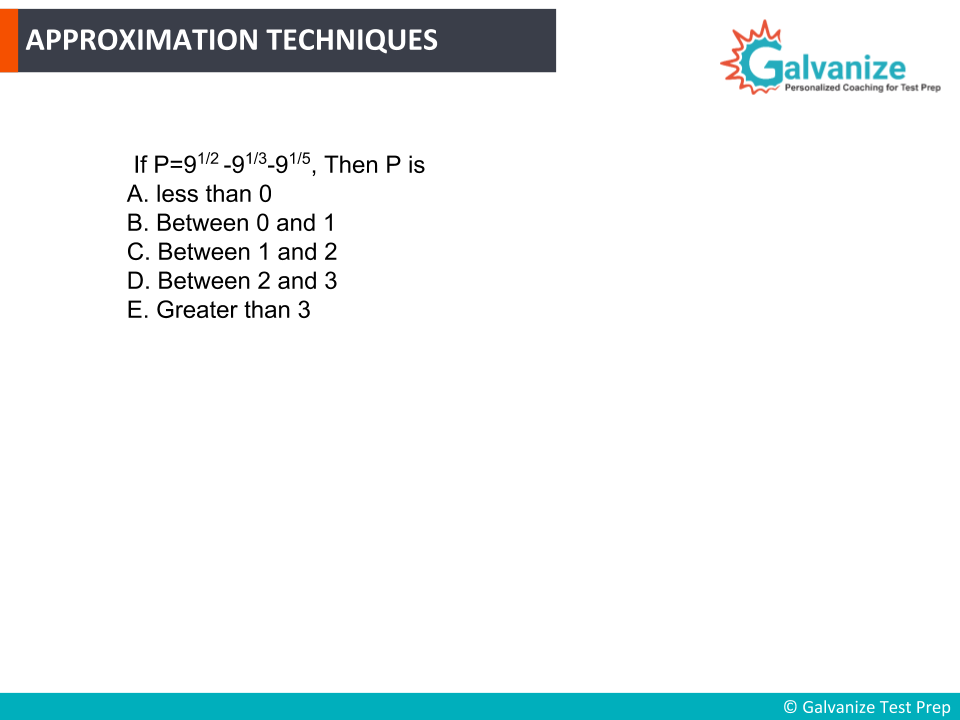
This value, the whole value has to be less than one. So it cannot be between 1-2, or 2-3. So these options are ruled out right now.
On to the next one – 9^⅕ compared to 1^⅕. As we just covered, when the powers are the same, you need to compare only the bases, so 9^⅕ is obviously greater than 1^⅕.
So now you have “[3- (a number greater than) 2 + a number greater than 1]”.
Like Us On Facebook
Now, 3- (a number greater than 2 + a number greater than 1) will give you a number greater than 3. This gives you the correct answer – it has to be a negative number, less than zero.
This is how you will use the approximation techniques in such types of problems.
Chapter 6
Elimination Techniques in GRE Math
GRE Math Practice Question
Now on to elimination techniques – used mostly for Multiple Choice Questions (MCQ) and Multiple Answer Questions (MAQ).
“From a group of five friends A, B, C, D, and E, two people are randomly selected to attend a party. What are the chances A and B both attend the party?”
So five friends, two people – in probability questions, it’s always easier to find a denominator. The total number of ways you can select 2 people from 5 people is 5C2. So the denominator is 10 here. 5C2 is 10. So now we can eliminate option ‘C’ here. We’re left with four other options.

What is the numerator?
2 people out of a group of 5 need going to attend the party. Now, how many ways can we select the options AB? Just one. So the numerator is 1. So the final answer is 0.1
I eliminated 0.25 directly because the denominator is 10 (5C2. ) so we can eliminate that option straight off the bat.
Chapter 7
Use of Standard Techniques
GRE Math Practice Question
So, now on to the use of standard percentages. There is no competitive exam without at least one question on percentages. Data Interpretation questions mostly will have applications of percentages or fractions & decimals only- nothing more than that will be tested.
Right, so how do you use these standard percentages? There are these standard percentages – when we’re talking about 1% of a number, shift 2 decimals to the left. It’s like 1% of 23 – you know that means 23 by 100 which is actually 0.23. All we needed to do was shift this decimal point two places to the left.
Again 10% of the number, ship one decimal place to the left. 23/10 – that becomes 2.3. The decimal point is shifted one place to the left.
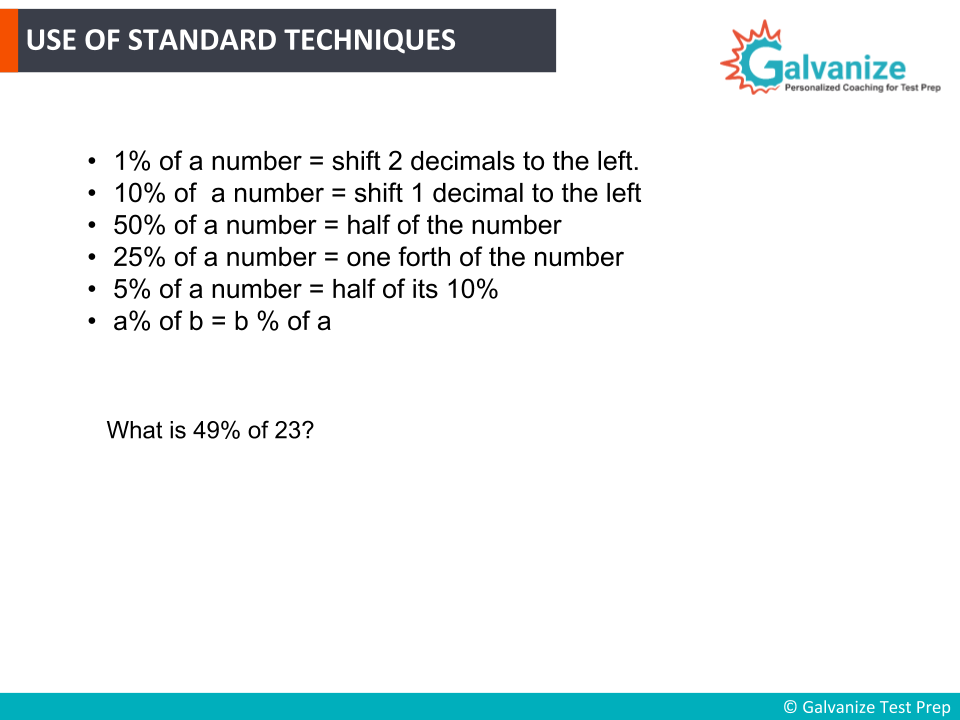
50% of any number is half of that number. 50% of 23 is nothing but half of 23 which is 11.5. 25% of a number is a quarter of that number. So 25% of 23 is 1/4th of 23.
5% of a number is half of its 10% so just find 10% of the number and then divide by 2.
Now a% of b is the same as b% of a. So 23% of 50 is the same as 50% of 23. So if you have to find 23% of 50, don’t waste time calculating that. Find 50% of 23 which is 11.5 and that’s your answer.
More Practice Questions
Practice GRE Math. Get Performance Insights and Review Explanations.
Free GRE App!Here’s an example. What is 49% of 23? Any of these standard percentage rules can be used to solve this.
What we’re going to do is, we’re going to rewrite it as (50% of 23 – 1% of 23). 50% of 23 is 11.5 and 1% of 23 is 0.23. So the answer is 11.27. Instead of calculating 49/100 * 23, we’ve used a shortcut here. We’ve rewritten this in terms of the standard percentages. That gives us 11.27 which is what the answer is here.
Chapter 8
On Screen Calculator
About the onscreen calculator – the GRE does allow you to use an onscreen calculator. However, not many GRE Quantitative questions – in fact, at most one question will involve tedious calculations. Mostly we tell students not to use this calculator. It will take time for you to open the calculator & plug in the answer choices.
Now when you do have the onscreen calculator open, you should remember the important mnemonic – PEMDAS. This stands for Parentheses, Exponents, Multiplication, Division, Addition, and Subtraction.
You have to plug in the expressions only in this order- otherwise, your answer will be wrong. So you can see now – this is what the onscreen calculator looks like. It’s not a scientific calculator. At the most, you can find the square root of the number – that’s all that’s given to you, right?
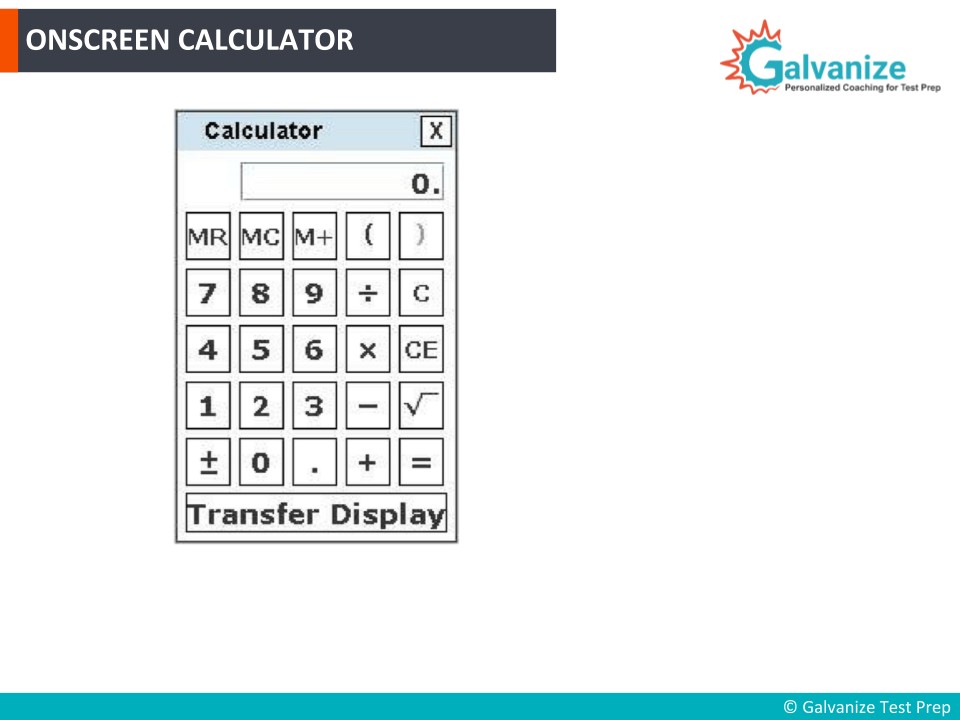
So tedious calculations will not be a part of the GRE.
The ETS tests you only on concept clarity – how well you have understood and can apply the concepts you’ve learned. So nobody’s going to give you a 5-digit number and ask you to multiply it by another 5-digit number. As much as possible, do not use an on-screen calculator.
Now you have a ‘mark & review feature’ on the GRE General test. You can always mark any question that you don’t know to come back to later. You should not skip any questions. You can come back and answer it when you have the time.
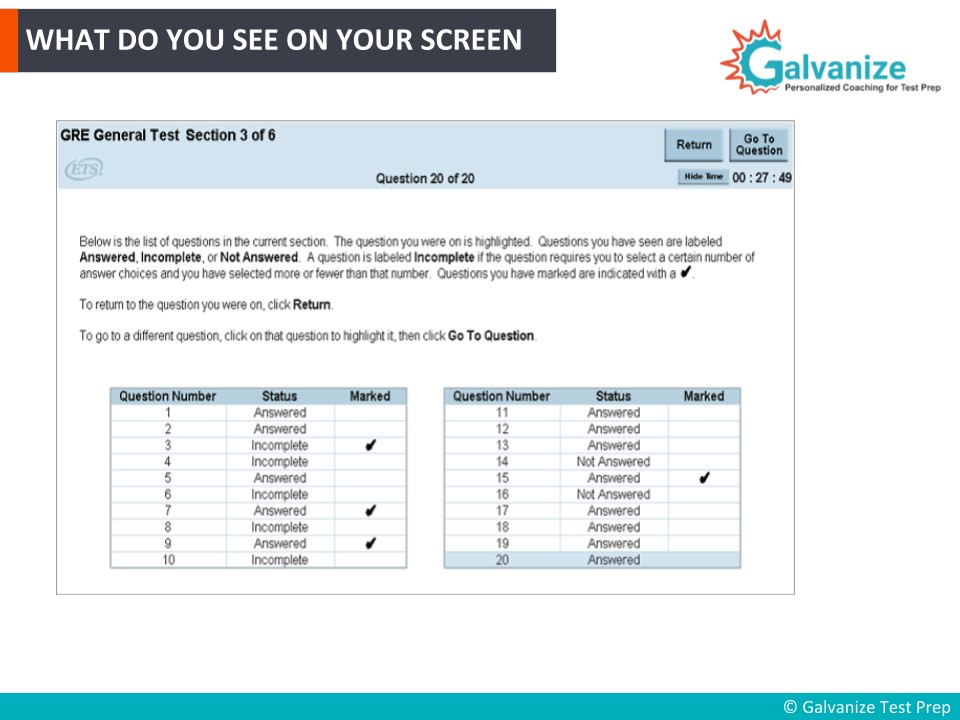
As we’ve said, you should never skip any question on the GRE. Mark the questions you haven’t answered in a section as ‘incomplete’ if needed.
Now, there’s a visual element that you need to be watching out for – the time display you’ll see on your screens. Be very careful as to how you spread out the time.
As mentioned earlier, it is advised to not use an on-screen calculator for the GRE. As you practice questions during your GRE Prep, you will find yourself becoming more and more skilled at mental math and written calculations. The speed with which you identify patterns and understand recurring numbers used for calculations will improve, as will your general affinity toward math.
That being said, if say during compound interest questions, you are required to calculate squares and you’re finding it a bit tedious, do use the calculator to your advantage and speed things up if you’re stuck. Try not to make a habit out of it!
Chapter 9
Question-wise Split Up
GRE Time Management
Right so, the first kind of question is Data Interpretation. There will be at most six questions and on average we expect students to spend no more than 2-3 minutes on a question on the GRE. So make sure you allot a full three minutes on average for data interpretation.
The reason we recommend this is it usually involves a simple graph but looking at that means you have to do it very carefully – look up at the units, and look up all over the graph. There will be information all over the graph.
Again there is an exclusive webinar on how to handle Data Interpretation questions on our Youtube channel – you can look at it to find out GRE Quant shortcuts & techniques.
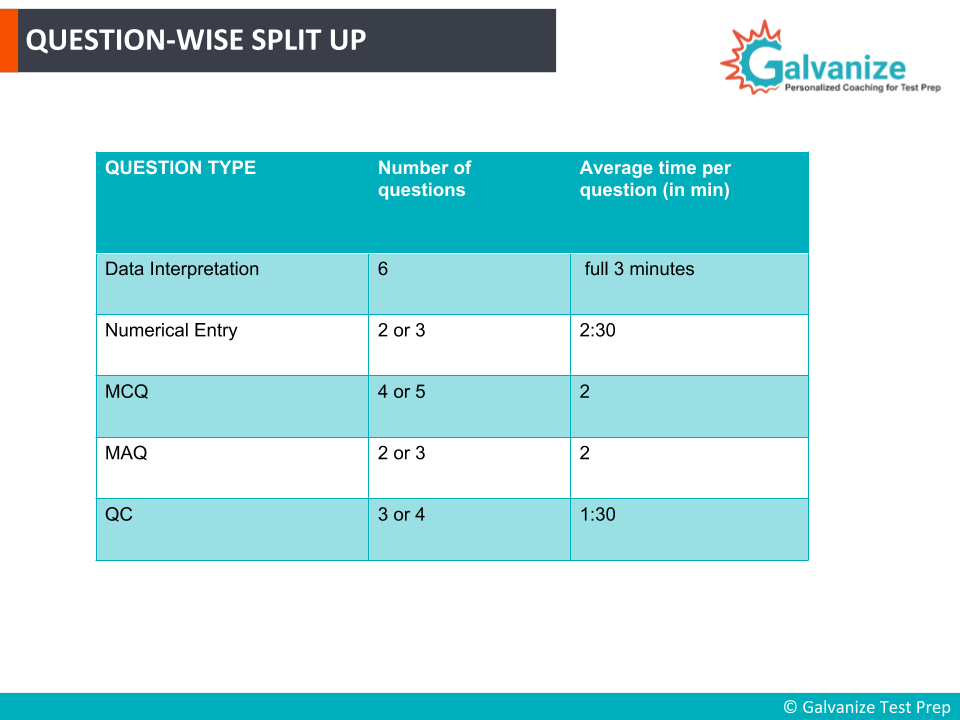
Now for numeric entry questions – there will be 2 or 3 questions and you will have to allot about 2.5 minutes per question. The reason is that numerical entry might involve an analytical approach. You will have to fill in the answer, there are no options. It might be a fraction, it might be a decimal.
Next, MCQs. There will be 2 and you should not take more than 2 minutes per question. This should not involve an analytical approach, use back-substitution to get to the answer. There are five options so use the elimination method to arrive at the right answer.
The same approach needs to be taken with the MAQ questions- the MAQ questions are often considered the hardest. The reason is that if you don’t pick all the right options, you will not be graded for that question.
So, if out of five options, three are correct, you need to pick all three.
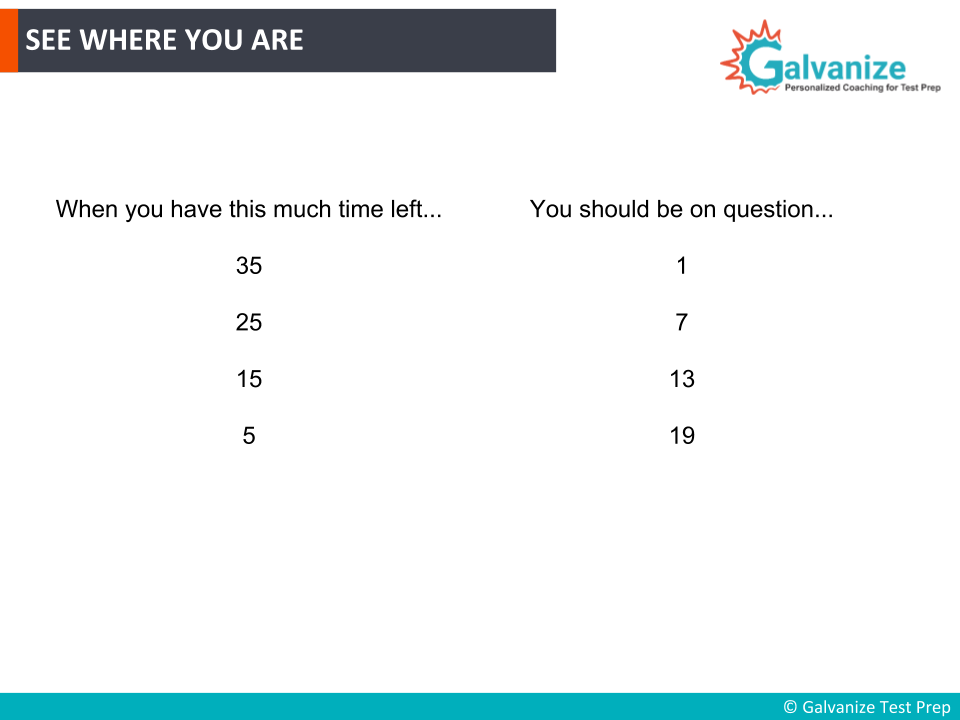
An incomplete answer is not graded so you will lose points on that.
Quantitative comparison questions – as I just gave you an example, will involve you taking a rational approach. For each question, you can afford to allot 1.5 minutes. However, it shouldn’t take you that long to answer it. It shouldn’t take you more than 1 minute per question.
You need to spread up your thirty-five minutes in an efficient manner so that it’ll be easier for you to review what you have done before submitting it and then make sure that you have not made any mistakes.
You could always look at your scratch paper to make sure you have made no mistakes. You will have time for that also provided you follow these timings properly, and stick to these timings properly.
Right, now see where you are – this is the progress of where you should be. At the 35th minute is when you start the test – you should be on the first question.
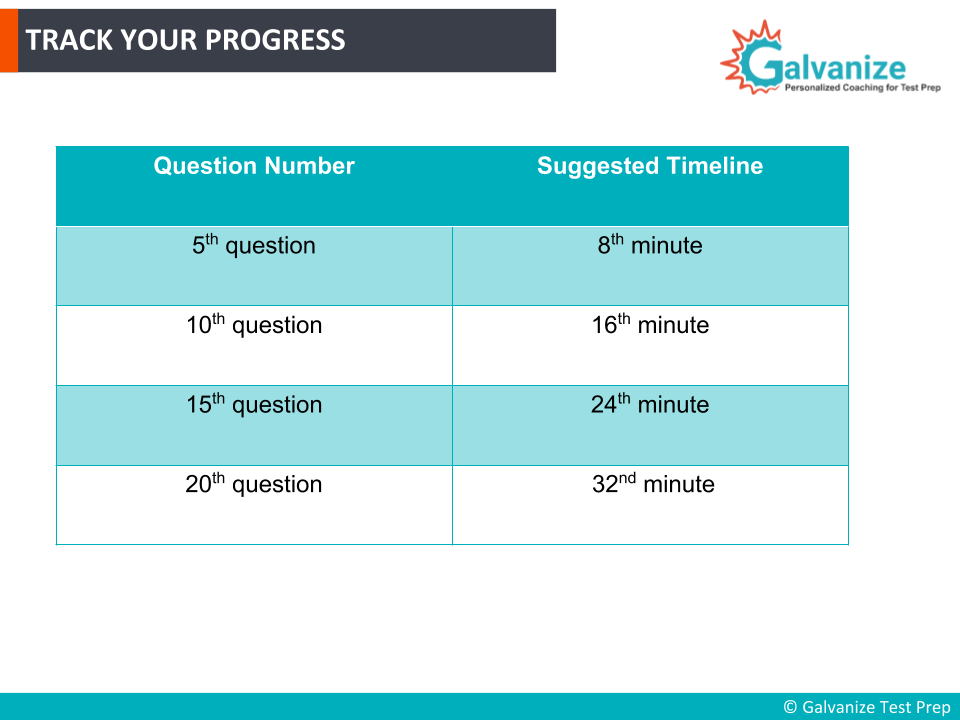
Twenty-five minutes, you have just completed ten minutes of your time which means you should have completed at least six questions. So you should be on the 7th question at the 25th minute. At fifteen minutes, you just have a few minutes left.
That is you should have covered most of the questions – you should be on the thirteen questions. When you have just five minutes left, you should be on the nineteenth question.
The reason is you might have skipped some questions or you might have marked them for later review, so if you are we have this five-minute slot here you can always go back and attempt those questions. Apart from the mock tests, taking separate GRE quantitative practice tests are also an important contributor to success.
So this is how you need to spread all the time on the day of the exam by best utilizing these GRE quant tricks.
Subscribe to us on Youtube
Having said that what is most important is attempting every question, and preparing properly. All the more important is having a good night’s sleep, eating good, healthy food, and making sure that you don’t panic during the exam. Stay cool, stay calm.
This comes with taking more GRE online practice tests, and more timed tests until you’re comfortable with the pattern of the exam. That is what we have on our platform.
Given the pandemic, plenty of universities are offering GRE Waivers. Should you take a GRE Waiver?
GRE Math Sample Questions
Leave a comment below with the answers to the following questions.
Question 1
Here is an interesting question.
What is the remainder when (53)^35 is divided by 13?
a. 3 b. 7 c. 1 d. 2 e. 5
Question 2
This question is a little tricky. Also try to give an explanation for your answer.
How many three digit numbers can be formed using all the digits other than 0, not repeating any digit, such that the sum of the digits is 18?
a. 36 b. 504 c. 72 d. 42 e. None of these
FAQ (Frequently Asked Questions)
How to manage time in GRE Quant?
- 2 sections, 40 Questions (20Q/section) : 70 minutes ( 35 minutes/section)
Is GRE Math hard?
- GRE math is actually easier than SAT, and ACT math problems, and GRE only tests you on simple concepts
How efficient is the GRE ON Screen calculator?
- Most GRE Questions won’t require a calculator: So don’t use ON screen calculator much
- Also if you were to use it: you have to remember the important mnemonic – PEMDAS
How often should I take practice tests?
- Most people just brush up a lot. But it is not enough. One needs to practice a lot. How much? Until you get your desired score!
What are some GRE Math Tips and Strategies?
Get a GRE math cheat sheet, maintain an error log, SWOT Analysis, and follow ZONEF, PIES, and MIGMO techniques. Don’t use the ON SCREEN calculator unnecessarily. Focus on concept clarity during the preparation
How many math questions are there on GRE?
The GRE mathematics test consists of approximately 66 questions.
GRE Quant Time Management: A Quick Summary:
- To get a good university abroad for the degree you seek, fix a score based on the requirements and start preparing
- GRE Quant score between 130-170: To get a perfect score, you need to manage time
- Have a study plan: A Quantitative Reasoning practice chart: Squeeze some time from your day for this
- Course managers at Galvanize will take the responsibility to get you going if you enroll with galvanize
- GRE QUANT : 2 sections, 40 Questions (20Q/section) : 70 minutes ( 35 minutes/section)
- Main Topics: Arithmetic, Algebra, Geometry, Data Analysis
- Most weight is carried by Arithmetic analysis intertwined with algebra and Data analysis
- Prioritize weak topics first: Focus on concept clarity
- GRE math is actually easier than SAT, and ACT math problems, and GRE only tests you on simple concepts
- Brushing up is not enough: One needs to practice ALOT and take time to review
- Get yourself a GRE Math cheat Sheet: A sheet of math formulas
- Maintain an Error log: So you will never make that mistake again.
- SWOT Analysis: To analyze your weaknesses and strengths
- On the day of the GRE:
- Follow MIGMO: Make an intelligent guess and move on: There’s no negative marking in GRE
- Follow ZONEF and PIES
- Go for visual interpretations in geometry
- Use Approximation and elimination techniques mentioned in the blog
- Most GRE Questions won’t require a calculator: So don’t use ON screen calculator much
- Also if you were to use it: you have to remember the important mnemonic – PEMDAS
- You have the mark and review later option so don’t leave any questions
- Data Interpretation Questions: Spend your full three minutes here.
- Numeric entry Questions: 2.5 minutes
- MCQ: 2 mins/Q
- Quantitative Comparison Questions: 1.5 mins/Q
- Spread up your 35 mins in an efficient manner
- Have 5 minutes to spare in the end to mark off the reviewed questions
Now it's your turn
I'd like to hear from you
Which of today’s GRE Quant shortcuts are you going to try first?
Are you going to work on your GRE Quant strategies right away?
Or maybe you’re ready to start taking a few quantitative tests.
Either way, leave a comment below right now.

Related Blogs:
- GRE Reading Comprehension | With Practice Questions and Answer’s
- How to Score a 160+ on the GRE Verbal | Tips, Pattern, Practice Questions & Scores
- A Killer Guide to Analytical Writing Assessment | With Samples for Practice
- GRE 101: A Complete Guide To GRE
- Free Online GRE Practice Test with Score Analysis
- Score a perfect 170 in GRE Math
- All You Need To Know About GRE Vocabulary
GRE Quantitative questions / Practice
Practicing Quant section is a really good way for anyone to excel in the concepts and work on their weaknesses ad actually get a sense of what they would be experiencing in the actual GRE exam




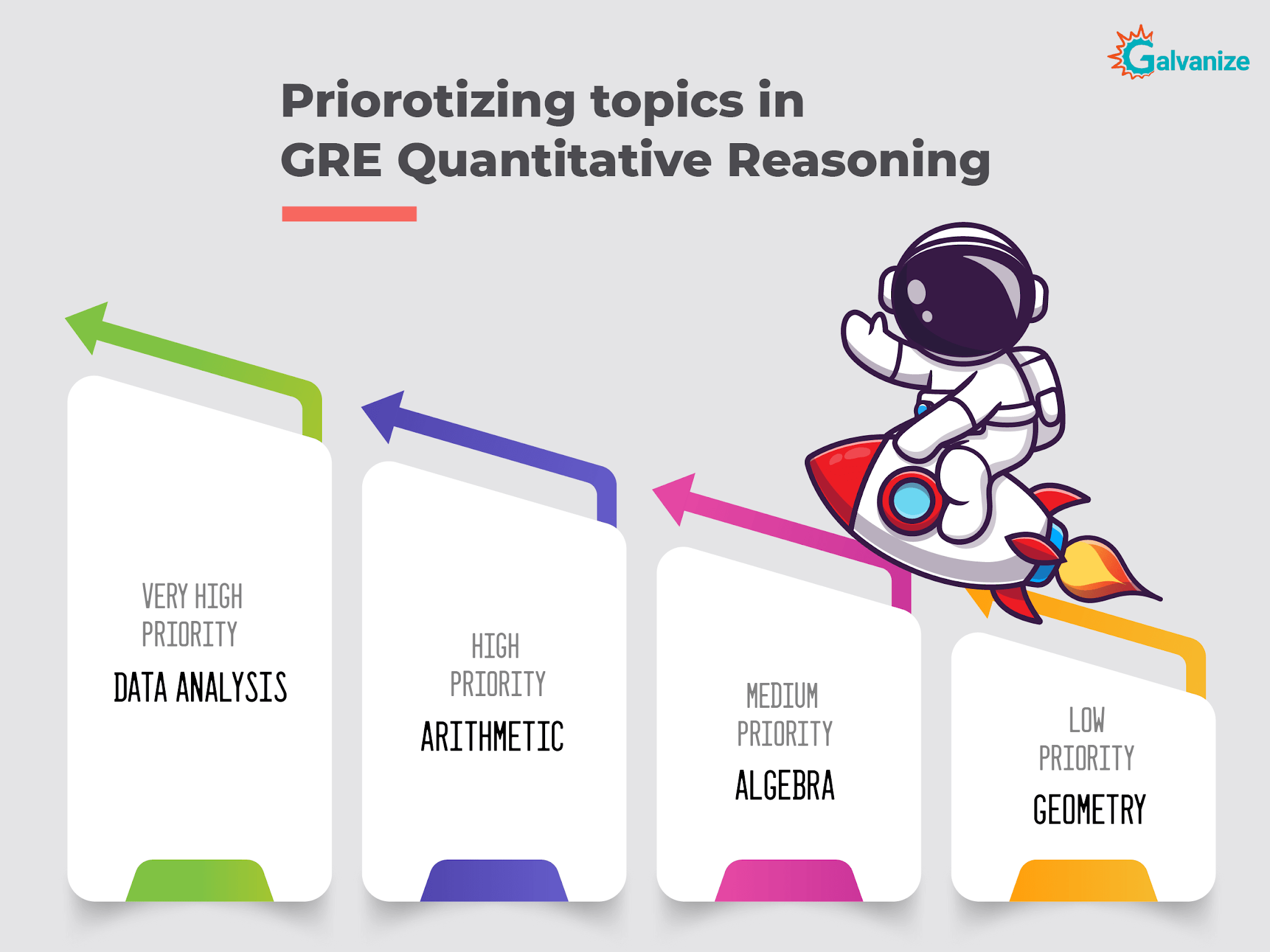







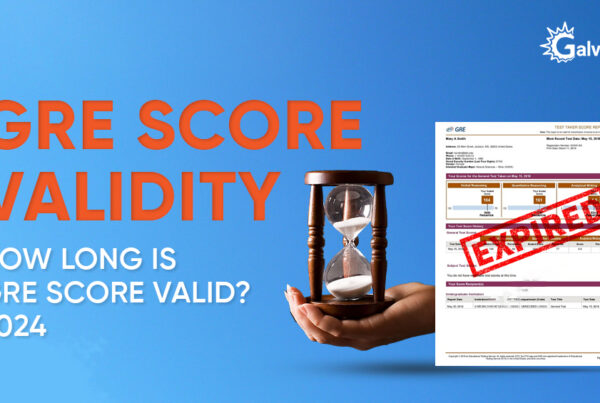
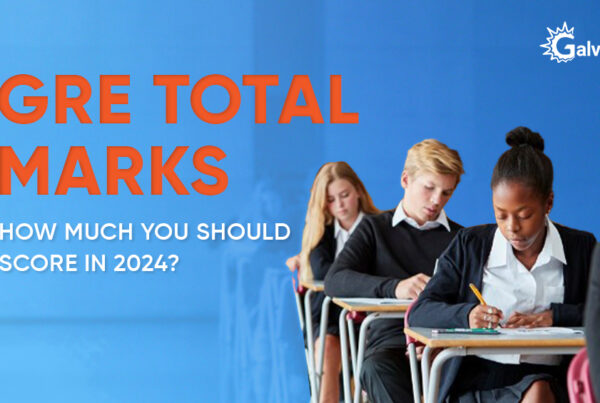

Answer:-
Q1. d.2
Explanation- unit digit of 53 power 35 is 7 so when 13 goes into any number having unit digit as 7 it will give a remainder of 2
Q2. e. None of these
Explanation- 3 digit number making sum of 18 from the set of {1,2,3,4,5,6,7,8,9} are (1,8,9) & (5,6,7) only.
Please make me correct if wrong.
(189) -> 6 ways to arrange digits
(297) -> 6 ways to arrange digits
(369) -> 6 ways to arrange digits
( 378) -> 6 ways to arrange digits
(468)->” ”
(459)
(567)
______________________
42 numbers
Q1. remainder will be one. See the modulo arithmetic for better understanding.